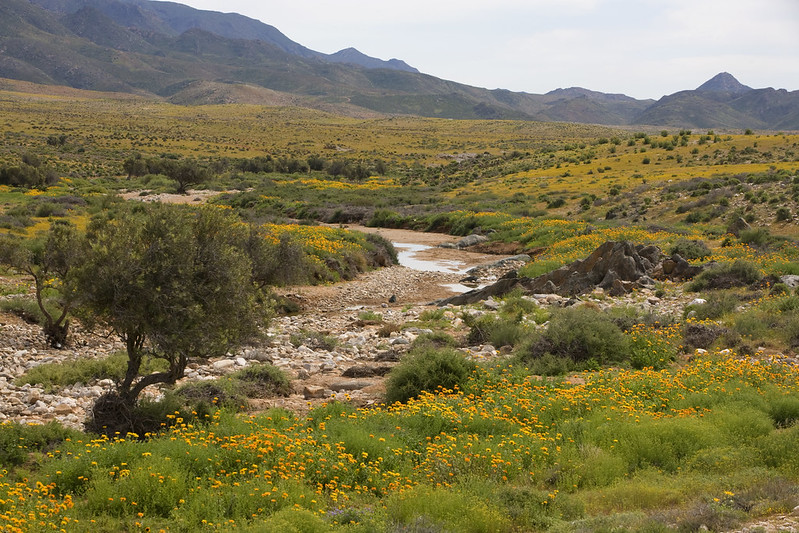What is the Great Green Wall and what does it mean for Africa’s future?
Climate plans are costly and with the added pressures of the pandemic they can become unachievable. It is a global responsibility to help Africa on its path to sustainability.
C
OVID 19 has devastated communities in many regions of the world, including Africa. Leaders face two stark choices for the future: reverting to the unbridled self-interest that drove states, or breaking boldly with the past for ambitious plans to build back better, by creating prosperous and sustainable societies benefitting all.
The possibility for change is beyond anything we ever imagined, and we have the knowledge to guide us. What’s needed is decisive action. Can young people in Africa and Europe expect that new start after the joint summit of the African and European Unions in 2021?
Africa’s human loss to COVID-19, so far, is less than was initially feared. Still, the economic and social impacts of the pandemic are severe.
Households and communities have been hit hard by disruptions to the global food supply chain and a 23% drop in remittances in 2020.
Reigniting economies and ensuring food self-sufficiency are now top items on an agenda that includes the stability, peace and security needed to both achieve the African Continental Free Trade Area and build the consumer market Africa is betting on to drive investment.
With 2.5 billion people by 2050, Africa is expected to be the largest single market in the world. But if Africa’s growth follows the model of the West, the climate change impacts could be unbearable all over the world.
Europe’s alternative vision of following a more sustainable path is valid, perhaps even desirable.
And it is not just by the young people from Africa active in the global Fridays For Future movement or Africa’s enduring renewable energy advocates, such as AFREPREN, who are encouraging it. Africa’s leaders have signaled this desire, in two unmistakable ways: first, through the Great Green Wall initiative, and second, by setting voluntary targets to avoid, reduce and reverse land degradation by 2030.
A recent assessment of the impact of the Great Green Wall shows what is possible – close to 20 million hectares of land restored, over 350,000 jobs created and around $90 million in revenues generated by 2018 since its launch by the African Union in 2007.
Ethiopia accounts for 15 million hectares of this restoration. The benefits are remarkable. Threatened plant and animal species thrived and food security improved significantly. Showing a new resilience to drought, several communities did not need food aid during the 2015-2016 drought that wreaked havoc in Eastern and Southern Africa.

Almost half of Africa is affected by desertification so 52 African nations have committed reducing and reversing land degradation. Photo by John Hogg/World Bank on Flickr.
The Great Green Wall is more than just growing trees on millions of hectares. It is growing hope, and is expected to improve economic stability by transforming degraded lands into spaces that produce food, animal feed and fiber as well as create new green jobs.
But as the assessment shows, governments in the Sahel cannot afford the $4.8 billion needed every year for at least 10 years to achieve the Green Green Wall targets.
In an even greater initiative, all but two of Africa’s 54 countries have set up voluntary national targets to avoid, reduce and reverse further degradation of the land by 2030. This is a significant development because around 45% of Africa’s land area is impacted by desertification. And of this, 55% is at high risk of further degradation.
Countries have identified and earmarked large areas with potential for restoration, starting with the hotspots where land degradation poses numerous threats.
The idea, which has been tested successfully in at least 14 countries, is to put degrading areas back into productivity using a mix of land-use approaches, such as sustainable land management techniques that are built on traditional knowledge. The process, known as achieving land degradation neutrality, helps nature to recover and brings a wide range of benefits, among them, cutting and reversing greenhouse gas emissions.
Mobilizing public and private investments to help Africa’s land users to switch to more sustainable practices is urgent and important. Urgent because land use in Africa will remain a major growth driver, for at least another decade, through food supply to a fast urbanizing population and by supporting the livelihoods of its large, rural land-dependent population.
But also important because Africa’s farmers are ready to change. Moving the world’s largest consumer market on the path to sustainability in a matter of decades could reshape other consumer markets. But the cost of this change cannot be borne by Africa.
In their haste to reopen economies, leaders bemoan the uncertain future young people now face. Pre-COVID-19, young people abandoned their Friday classes to demand change, so there is no excuse to hark back to the past.
The summit of the African and European Unions in February 2021 can chart a promising future. Young people are expecting change and wait with bated breath for leaders in Africa and Europe, acting in enlightened self-interest, to take daring steps leading to a sustainable future for all.
The ideas presented in this article aim to inspire adaptation action – they are the views of the author and do not necessarily reflect those of the Global Center on Adaptation.